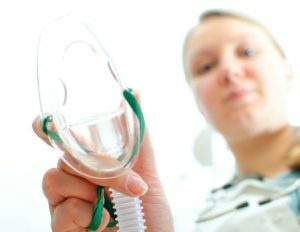 Visiting the dentist is not enough for anyone to bring joyful emotions. Modern medicine offers dental treatment with the use of a patient immersing in sleep general anesthesia. What do you need to consider when considering this option?
Visiting the dentist is not enough for anyone to bring joyful emotions. Modern medicine offers dental treatment with the use of a patient immersing in sleep general anesthesia. What do you need to consider when considering this option?
Fear of dentists is inherent in every second patient, but in some cases the situation becomes uncontrolled and it is not possible to treat in the usual way.
So-called dentofobia raises the question of the need for general anesthesia. So can I treat my teeth under general anesthesia?
Sleep treatment allows you to effectively eliminate existing defects. But one should remember the existing limitations, taking into account not only positive, but also negative aspects of such therapy.
Contents
- Features of the use of anesthesia in dentistry
- Indications for the use of general anesthesia
- When such a method is unacceptable
- The advantages of general anesthesia
- The disadvantages of general anesthesia
- The work performed for an hour
- Varieties of general anesthesia
- Intravenous - one shot and done
- Inhalation - forchildren the most that
- The price of a question
- Nuances can be learned from responses of patients
Feature of application of anesthesia in stomatology
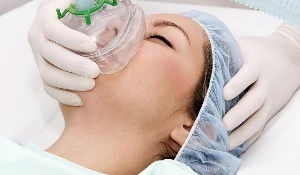 Under the general or common narcosis pdrazumevayut type of anesthesia, promotes full off sensitivity of the patient, his absolute relaxation and to put in a state of sleep or slumber.
Under the general or common narcosis pdrazumevayut type of anesthesia, promotes full off sensitivity of the patient, his absolute relaxation and to put in a state of sleep or slumber.
Dentists call the general anesthesia a sedation, as often a complete disconnection of consciousness is not required, and the patient is able to respond to the doctor's voice, calmly perceiving the occurring manipulations, being in a relaxed state.
It is important to know that the treatment and extraction of teeth under general anesthesia can be carried out only in dentistry, which meet the following criteria:
-
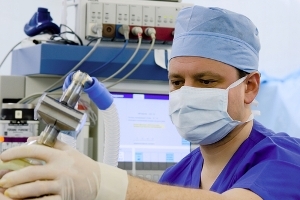 availability of a license to use such a technique ;
availability of a license to use such a technique ; - presence in the staff of an anesthesiologist , which should monitor the patient's condition throughout the procedure;
- availability of special equipment in the form of an anesthetic dispenser ( if inhalation anesthesia is used), a monitor for monitoring the patient's condition by parameters such as heart rate, pulse, blood pressure, X-ray apparatus;
- sufficient experience of a dentist in the field .
Indications for use of general anesthesia
Dental treatment under general anesthesia is justified in the following situations:
-
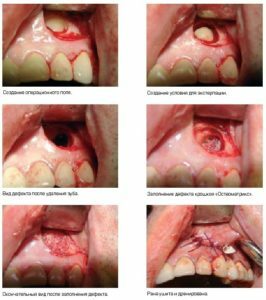
Removal of a retarded tooth
The presence of dental phobia with panic fear of dentists and procedures when an attack provokes one mention of dental treatment. Such patients completely do not control themselves, so usual treatment can result in loss of consciousness or closure of the mouth with a rotating tool working in it, causing severe trauma. In addition, the usual painkillers in this case lead to an excessive increase in the blood of adrenaline, which contributes to the deterioration of the general condition.
- Child age under 3 years old .The use of general anesthesia makes it possible to avoid psychological trauma and exclude the development of a negative attitude towards dentists. As a result, you can make your teeth as quickly and efficiently as possible.
- Carrying out operations of , involving a large amount of work or heavily time-consuming.
- The presence of an increased gag reflex , when an unpleasant sensation causes a simple touch to the gums or soft palate.
- Allergic reaction of to funds used in local anesthesia. In the case of controlled general sedation, there is no hypersensitivity.
- The presence of mental or neurological disorders of , making it impossible for an adequate response to a doctor's request.
When this method is unacceptable
 When considering the treatment option and the removal of teeth under general anesthesia, we should not forget about the high risk associated with the use of such anesthesia.
When considering the treatment option and the removal of teeth under general anesthesia, we should not forget about the high risk associated with the use of such anesthesia.
To avoid the development of serious complications, the use of general anesthesia is contraindicated in:
- pathologies of the cardiovascular or respiratory system;
- high blood pressure;
- of pregnancy.
Advantages of general anesthesia
The undoubted advantages of sedation:
- the possibility of changing the depth of sedation up to the introduction of the patient into deep sleep;
- strict dosage of injectable drugs and the ability to monitor the state of loss of sensitivity;
-
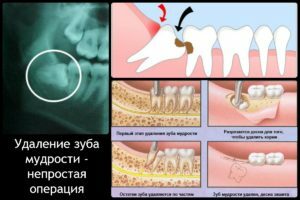 complete recovery of the patient after leaving the anesthesia after a maximum of 40 minutes;
complete recovery of the patient after leaving the anesthesia after a maximum of 40 minutes; - fast and comfortable treatment of children and patients with dentofobia;
- the possibility of simultaneous removal of up to 10 teeth due to the prolongation of the sedation effect;
- painless and effective conduction of osteoplastic operations, implantation, prosthetics;
- imperceptibly passing for the patient removal of wisdom teeth, if the process is complicated due to the presence of bent roots.
Disadvantages of general anesthesia
Among the minuses:
- the possible presence of individual sensitivity to general anesthetics with a decrease in susceptibility or a prolonged withdrawal from anesthesia with deterioration of well-being( drowsiness, drunkenness, dizziness and nausea);
- the need for additional preparatory measures in the form of a general examination, ECG removal, also, for 5 hours before the procedure, food intake should be excluded, and within three hours before a visit to the dentist one should not drink beverages;
- high cost of general anesthesia, many times higher than the price of local anesthesia.
Work performed within an hour
Introduction of a patient into a nap or sleep state for 60 minutes allows the following operations:
-
 removal of 4-10 teeth( the amount directly depends on the complexity of the procedure);
removal of 4-10 teeth( the amount directly depends on the complexity of the procedure); - removal of 2-4 teeth, characterized by a difficult eruption( retentional teeth);
- treatment of 1 to 3 teeth at the pulpitis stage( the amount is determined by the condition of the roots);
- treatment of the order of 5 carious formations;
- installation of a pair of implants;
- treatment of periodontitis, if a patchwork operation is required.
Varieties of general anesthesia
There are two types of general anesthesia.
Intravenous - one injection and the case is made by
This type of general anesthesia is also called non-induction. Today the preference for this option is given by the maximum number of both patients and doctors. Special drugs are injected through the vein for a certain amount of time( the dosage is determined by the anesthetist).
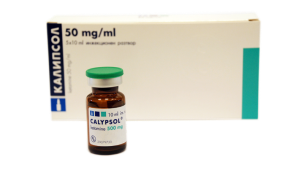 This method requires the availability of relevant knowledge and sufficient experience to select the right medicine as precisely as possible.
This method requires the availability of relevant knowledge and sufficient experience to select the right medicine as precisely as possible.
Among the commonly used drugs are Hexenal, Sombrevin, Calypsoil. The patient's condition throughout the procedure is controlled by an anesthesiologist.
Inhalation - for children the most
For this type of anesthesia, a special mask is required( it is applied to the face of the patient), through which an anesthetic formulation is supplied - an inhalation anesthetic mixture and oxygen that enters directly into the respiratory tract. As an anesthetic can be selected nitrous oxide, fluorotane, methoxyflurane.
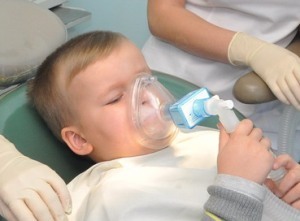 In this form of general anesthesia, it is necessary to use the endotracheal tube to ensure air entry into the airways.
In this form of general anesthesia, it is necessary to use the endotracheal tube to ensure air entry into the airways.
The disadvantage of inhalation general anesthesia is a long way out of it, so today this kind is used quite rarely.
Separately it is necessary to note the use of anesthesia for the treatment of children. At first, babies are allowed to drink water, in which the sedative is previously dissolved.
As soon as the child begins to sleep, he is injected with an intramuscular injection and, afterwards, intravenously.
About the treatment under general anesthesia, the dentist and anesthetist will tell:
The price of the issue
The cost of removing and treating teeth under general anesthesia is much higher than the cost of local anesthesia, but sometimes the issue of price is not decisive. The price may vary depending on the type of anesthesia used and the drugs chosen for the administration, the amount of the proposed work.
A separate category is the removal of problematic wisdom teeth due to the specificity of the operation and its high complexity. As a rule, the tariff for patients is exposed for one hour of work with the use of general anesthesia and ranges from 8 to 10 thousand rubles.
Nuances can be learned from the reviews of patients
To assess the effectiveness and convenience of dental treatment under general anesthesia, it is possible according to the following patients' feedback:
Because of the strong fear of dentists, the visits were postponed until the end of the emergency. As a result, the question arose about the need to remove several teeth at once, one of which began to hurt intolerably.
Because of the panic fear on the eve of a visit to the doctor went to a consultation accompanied by his wife, who explained the essence of what is happening to the doctor. As a result, general anesthesia was recommended, to which I immediately agreed. The operation was completely painless for me without any uncomfortable sensations. So I'm completely satisfied with the choice made.
Alexey, Saratov
Sedation was recommended by a pediatric specialist when we asked about the treatment of the daughter, who had to remove two front milk teeth and to fill a few more teeth.
Before that, we never visited the dentist, so the baby categorically resisted even the examination. Thanks to sedation, removal and treatment passed easily, without tears and pain, and the dentist did not get into the "black list" of the daughter.
Tatiana, Sochi
In some situations, general anesthesia can be a real panacea, but before deciding to take such a step, you should thoroughly weigh the pros and cons, so that the final result significantly outweighs the possible risks and consequences.
